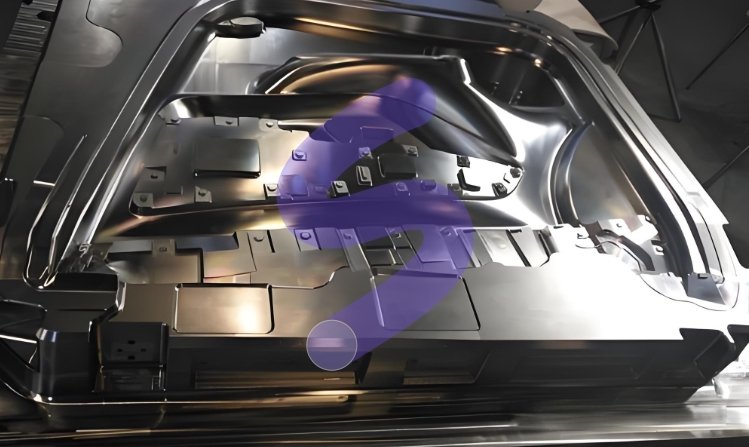
Durability is essential in automotive parts. Automotive Injection Molds are key. They shape parts that must last. Skilled Mold Makers know how to choose the right materials. The right materials make parts durable, efficient, and strong. This article explains which materials are best for Automotive Injection Molds.
Understanding Injection Molding Materials
1. What are Injection Molding Materials?
Injection molding materials are plastics and metals. They are melted and injected into molds to create parts.
2. Types of Materials Used
The main types of materials are:
- Thermoplastics
- Thermosetting plastics
- Metal alloys
Each material has specific advantages.
3. Why Material Choice Matters
The choice of material affects strength, appearance, and performance. The right material ensures that parts are durable and function properly.
Best Materials for Automotive Injection Molds
1. Polypropylene (PP)
Polypropylene is a lightweight, strong, and chemical-resistant plastic. It’s commonly used in automotive interiors and bumpers.
- Pros: Flexible, resistant to fatigue.
- Cons: Not very strong at high temperatures.
2. Acrylonitrile Butadiene Styrene (ABS)
ABS is strong, tough, and easy to process. It’s used for parts that need to withstand wear.
- Pros: Strong, impact-resistant, durable.
- Cons: Poor resistance to UV rays.
3. Polycarbonate (PC)
Polycarbonate is highly impact-resistant and durable. It is often used in headlight covers.
- Pros: Transparent, strong, heat-resistant.
- Cons: Susceptible to scratching.
4. Nylon (PA)
Nylon is a tough, flexible material. It is used in automotive engine parts and fuel systems.
- Pros: High strength, excellent wear resistance.
- Cons: Absorbs moisture, which can affect performance.
5. Polyethylene (PE)
Polyethylene is a low-cost, flexible material used for automotive fuel tanks and fluid containers.
- Pros: Chemical-resistant, easy to mold.
- Cons: Limited strength at high temperatures.
The Role of Mold Makers in Material Selection
1. Expert Knowledge
Mold Makers have deep knowledge of materials. They choose materials based on the part’s function and the production environment.
2. Testing and Prototyping
Before selecting a material, Mold Makers test different options. Prototyping ensures the material performs as expected.
3. Cost Efficiency
A skilled Mold Maker ensures the chosen material balances performance and cost.
Factors to Consider When Choosing Materials
1. Strength and Durability
Parts must withstand stress and pressure. Materials like ABS and Nylon offer excellent strength.
2. Temperature Resistance
Automotive parts are exposed to high temperatures. Materials like Polycarbonate and Nylon are great for high-temperature areas.
3. Chemical Resistance
Parts in contact with fuels or oils need chemical-resistant materials. Polypropylene and polyethylene are ideal for such applications.
4. Impact Resistance
Automotive parts need to resist impact. Polycarbonate is known for its high impact resistance.
5. Weight
Lightweight materials like Polypropylene help reduce the vehicle’s overall weight, improving fuel efficiency.
6. Cost
The material chosen should meet both performance and budget requirements. The right Mold Maker ensures cost-effectiveness without sacrificing quality.
Materials for Specific Automotive Applications
1. Bumpers and Exterior Parts
- Polypropylene is commonly used for its toughness and flexibility.
2. Interior Components
- ABS is often used for its aesthetic appeal and durability.
3. Engine Components
- Nylon and Polycarbonate are preferred for their high heat resistance.
4. Fuel System Components
- Polyethylene is used for fuel tanks and pipes due to its chemical resistance.
Innovations in Automotive Injection Molds
1. Recyclable Materials
Sustainability is crucial. More recyclable materials are being used in Automotive Injection Molds.
2. Composite Materials
Composites are becoming popular due to their strength and light weight.
3. Advanced Fillers
Fillers are added to materials for enhanced properties, like improved wear resistance or strength.
The Future of Injection Molding Materials
1. Improved Performance Materials
Future materials will offer better performance, such as higher heat resistance and lower weight.
2. Sustainable Materials
The shift towards sustainable, eco-friendly materials is growing. Automotive Injection Molds will use materials that are both durable and environmentally friendly.
3. Smart Materials
Materials that change properties in response to temperature, pressure, or other factors are being developed for the automotive industry.
Choosing the right material is critical for Automotive Injection Molds. Mold Makers play a vital role in selecting materials that ensure durability, strength, and performance. From bumpers to engine parts, each application requires specific properties. By understanding material choices, automotive manufacturers can produce long-lasting, high-quality components. As innovation continues, the future of Automotive Injection Molds will see even more advanced, sustainable materials driving automotive manufacturing forward.
